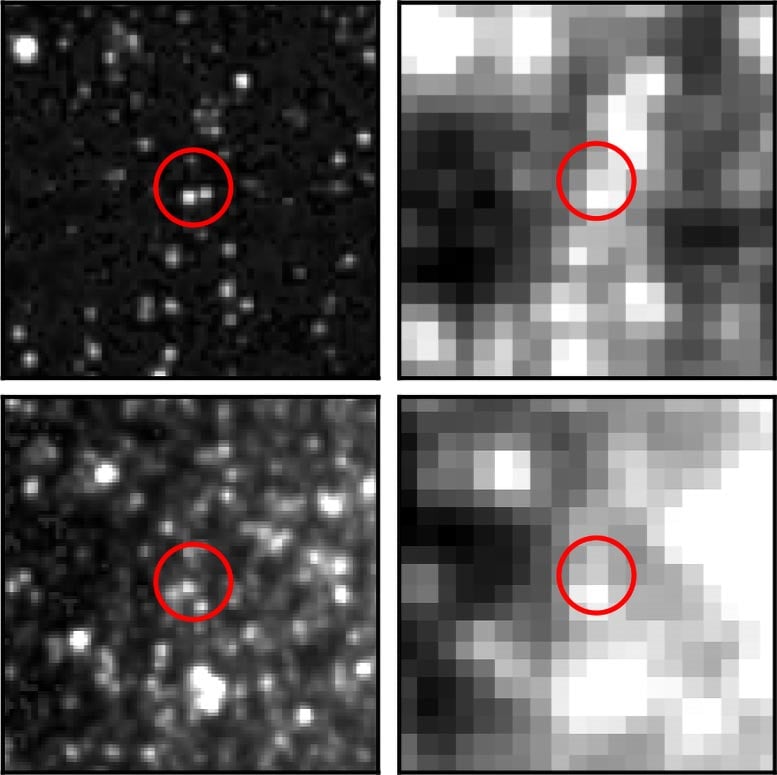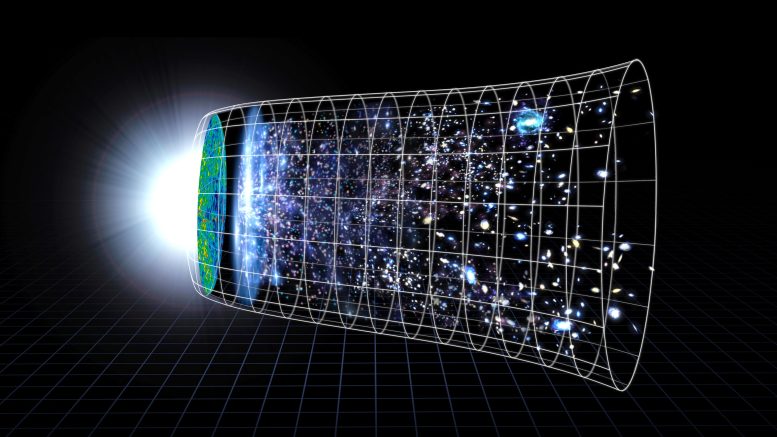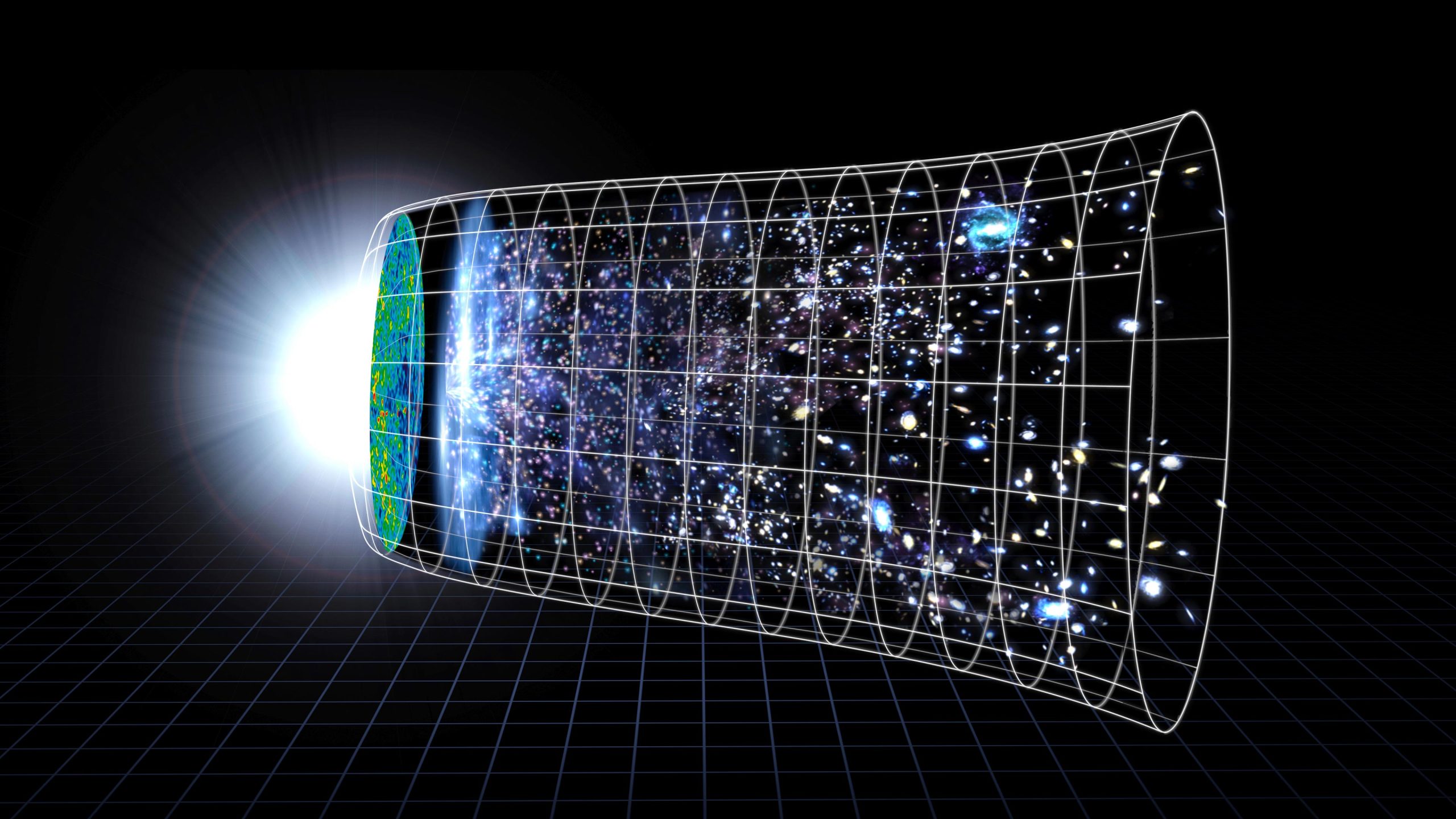An analysis by the University of Chicago of the rate of expansion of the universe has found that there may be no such thing as a “Hubble tension.”
The “crisis in cosmology,” sparked by different measurements of the expansion of the universe, may be nearing resolution thanks to James Webb Space TelescopeNew data analyzed by scientists suggests that the Hubble tension may not be as strong as previously thought. This could mean that our current model of the universe remains accurate.
Discussion about the rate of expansion of the universe
We know a lot about our universe, but astronomers still argue about how fast it is expanding. In fact, over the past two decades, two main methods for measuring this number — known as the Hubble constant — have come up with different answers, leading some to wonder if there is something missing in our model of how the universe works.
New insights from the James Webb Space Telescope
But new measurements from the powerful James Webb Space Telescope suggest there may not be a conflict, also known as the “Hubble tension,” after all.
In a paper presented to Astrophysical Journal, University of Chicago Cosmologist Wendy Friedman and her colleagues analyzed new data captured by NASAScientists have measured the distance to ten nearby galaxies using the powerful James Webb Space Telescope, and have also measured a new value for the present-day expansion rate of the universe.
It measures 70 kilometers per second per megaparsecoverlaps with the other main method for the Hubble constant.
“Based on these new Webb data and using three independent methods, we find no strong evidence for the Hubble tension,” said Friedman, a renowned astronomer and professor of astronomy and astrophysics at the University of Chicago. “On the contrary, our standard cosmological model for explaining the evolution of the universe appears to hold.”
Hubble tension?
We’ve known that the universe is expanding over time since 1929, when Edwin Hubble (a 1910 graduate of the University of Chicago, Ph.D., 1917) made measurements of stars that suggested that galaxies farther from Earth are receding faster than those closer to us. But it’s surprisingly difficult to pin down an exact figure for how fast the universe is expanding today.

This number, known as the Hubble constant, is essential to understanding the back story of the universe. It is a fundamental part of our model of how the universe has evolved over time.
“Confirming the Hubble constant tension would have major consequences for fundamental physics and modern cosmology,” Friedman explained.
Different ways to measure
Because these measurements are so important and difficult to make, scientists test them in different ways to make sure they are as accurate as possible.
One major method involves studying the light left behind from the aftermath. Big Bangknown as the cosmic microwave background. The best current estimate of the Hubble constant in this way, which is very accurate, is 67.4 kilometers per second per megaparsec.
The second main method, and one that Friedman specializes in, is to measure the expansion of galaxies in our local cosmic neighborhood directly, using stars whose brightness we know. Just as car lights appear dimmer when they are far away, stars appear dimmer at greater and greater distances. By measuring the distances and speeds at which galaxies are moving away from us, we can infer how fast the universe is expanding.
In the past, measurements made this way have given a higher number for the Hubble constant – closer to 74 kilometers per second per megaparsec.
Hubble tension puzzle
This difference is large enough that some scientists speculate that something important may be missing from our standard model of the evolution of the universe. For example, since one method looks at the early days of the universe and the other looks at the present era, something big may have changed in the universe over time. This apparent discrepancy has become known as the “Hubble tension.”
Enter the James Webb Space Telescope
The James Webb Space Telescope, or JWST, is giving humanity a powerful new tool to see deep into space. Launched in 2021, the successor to the Hubble Telescope, it has captured stunningly sharp images, revealed new aspects of distant worlds, collected unprecedented data, and opened new windows on the universe.

Friedman and her colleagues used the telescope to make measurements of ten nearby galaxies that provide the basis for measuring the universe's expansion rate.
To verify their results, they used three independent methods. The first used a type of star known as a Cepheid variable star, which changes its brightness predictably over time. The second, known as the “red giant branch tip,” uses the fact that low-mass stars reach a fixed upper limit on their brightness. The third and newest method uses a type of star called a carbon star, which has a fixed color and brightness in the near-infrared spectrum. The new analysis is the first to use all three methods simultaneously, within the same galaxies.
Re-evaluation of the Hubble constant
In each case, the values were within the margin of error of the value given by the cosmic microwave background method, which is 67.4 kilometers per second per megaparsec.
“To get good agreement from three very different types of stars is, for us, a strong indication that we are on the right track,” Friedman said.
The Hubble constant is essential to understanding the back story of the universe.
“Future observations with the James Webb Space Telescope will be crucial to confirm or refute the Hubble tension and assess the implications for cosmology,” said study co-author Barry Madore of the University of British Columbia. Carnegie Institution for Science and visiting faculty at the University of Chicago.
Reference: “Chicago-Carnegie Hubble Program (CCHP) Status Report: Three Independent Astrophysical Estimates of the Hubble Constant Using the James Webb Space Telescope” by Wendy L. Friedman, Barry F. Madore, In-Sung Jang, Taylor J. Hoyt, Abigail J. Lee, and Kayla A. Owens, August 12, 2024, Astrophysics > Cosmology and non-galactic astrophysics.
arXiv:2408.06153
Other co-authors of the paper were UChicago research scientist In-Sung Jang, Taylor Hoyt (PhD 2022, now at Lawrence Berkeley National Laboratory), and UChicago graduate students Kayla Owens and Abby Lee.
Funding: NASA.

“Extreme travel lover. Bacon fanatic. Troublemaker. Introvert. Passionate music fanatic.”







More Stories
A fossilized creature may explain a puzzling drawing on a rock wall.
MrBeast Sued Over ‘Unsafe Environment’ on Upcoming Amazon Reality Show | US TV
Watch comets Lemmon and SWAN approach Earth today